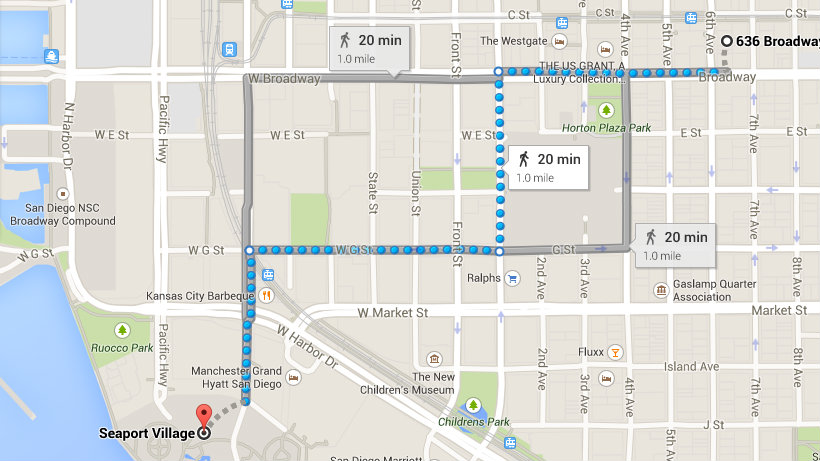San Diego and San Francisco are incredible places to study English, and each city offers so many exciting activities that sometimes, it is hard to leave! But the mountains, beaches, charming towns, gorgeous nature, and fast-paced cities of California beckon.
CISL students often take road trips while studying in SD or SF, and part of the fun is renting a car and driving to your destination. But, as we all know, driving includes . . . getting lost! To give or receive directions, you must understand the Imperative Voice. This is what we use to give commands (like directions) in English. Learn this grammar form and you are one (giant) step closer to being the best navigator on your next road trip!
Planning the perfect Memorial Day Weekend getaway? Click here for CISL’s guide to planning this trip!
Click here for information on how to rent a car while in San Francisco.

Using the Imperative Voice for Giving Directions in English
Overview of the Imperative Voice
The Imperative Voice is simply the base form (infinite without the “to”) of any verb. You do not have to conjugate the verb to match the subjects, as with English tenses. As you can see from the examples below, it is used to give commands.
Examples:
- Call me when you get home.
- Turn off the car.
- Look over there!
- Come here.
- Stop it.
Click here for CISL’s guide to taking a road trip to Las Vegas.
The Imperative Voice (Affirmative)
When we use the Imperative Voice in the affirmative, we are giving instructions or commands.
Examples:
- Turn left.
- Take the next right.
- Turn in here.
- Keep going straight.
Click here for CISL’s guide to taking a road trip to Napa.
The Imperative Voice (Negative)
For the negative form of the Imperative Voice, we use DO + NOT + BASE VERB. Usually we make DO + NOT into a contraction.
Examples:
- Don’t take the next right.
- Don’t turn here.
- Don’t drive too fast.
Click here for CISL’s guide to taking a road trip to Palm Springs.
Tips for Using the Imperative Voice
The Imperative Voice is very direct. In normal conversation, it isn’t always the best way to express yourself because it can seem very impolite. However, in a situation like giving directions, the Imperative Voice is necessary: you might not have a lot of time to give the directions before you miss a turn!
If you have a little more time, you can “soften” the language a little by adding phrases like “it’s a good idea to” or “you will need to” before the verbs.
Examples:
- You will need to turn left up here.
- It’s a good idea to take the next left.
- Try to take the next street.
- If you can, turn left up here.
Click here for CISL’s guide to taking a road trip to Lake Tahoe.
Helpful Vocabulary
The vocabulary words listed below are very helpful for giving directions. How many do you know?
General vocabulary
- continue
- turn
- keep going
- go straight
- on ramp
- off ramp
- highway/freeway
- intersection
- stoplight
- stop sign
- to speed
- speed limit
- corner
- park/parking
- turnoff
Collocations
- take a left/right
- take the next street/turn
Phrasal Verbs
- turn in (to a place)
- pull in (to a place)
- pull over (stop the car and park it on the side of the road)
- slow down
- speed up
- go ahead
- go over (the speed limit)
Practice giving imperative voice directions
The image below is a map of a walking route from CISL San Diego (which is located Downtown) to beautiful Seaport Village, where many students go after school to relax, have lunch, shop, and view the San Diego Bay. Can you give a friend directions using the vocabulary from the lists above? Once you have mastered this, you will be ready to give directions to a driver during your next road trip! The only question is . . . where should you go?
Click here for CISL’s guide to taking a road trip to Bodega Bay.

